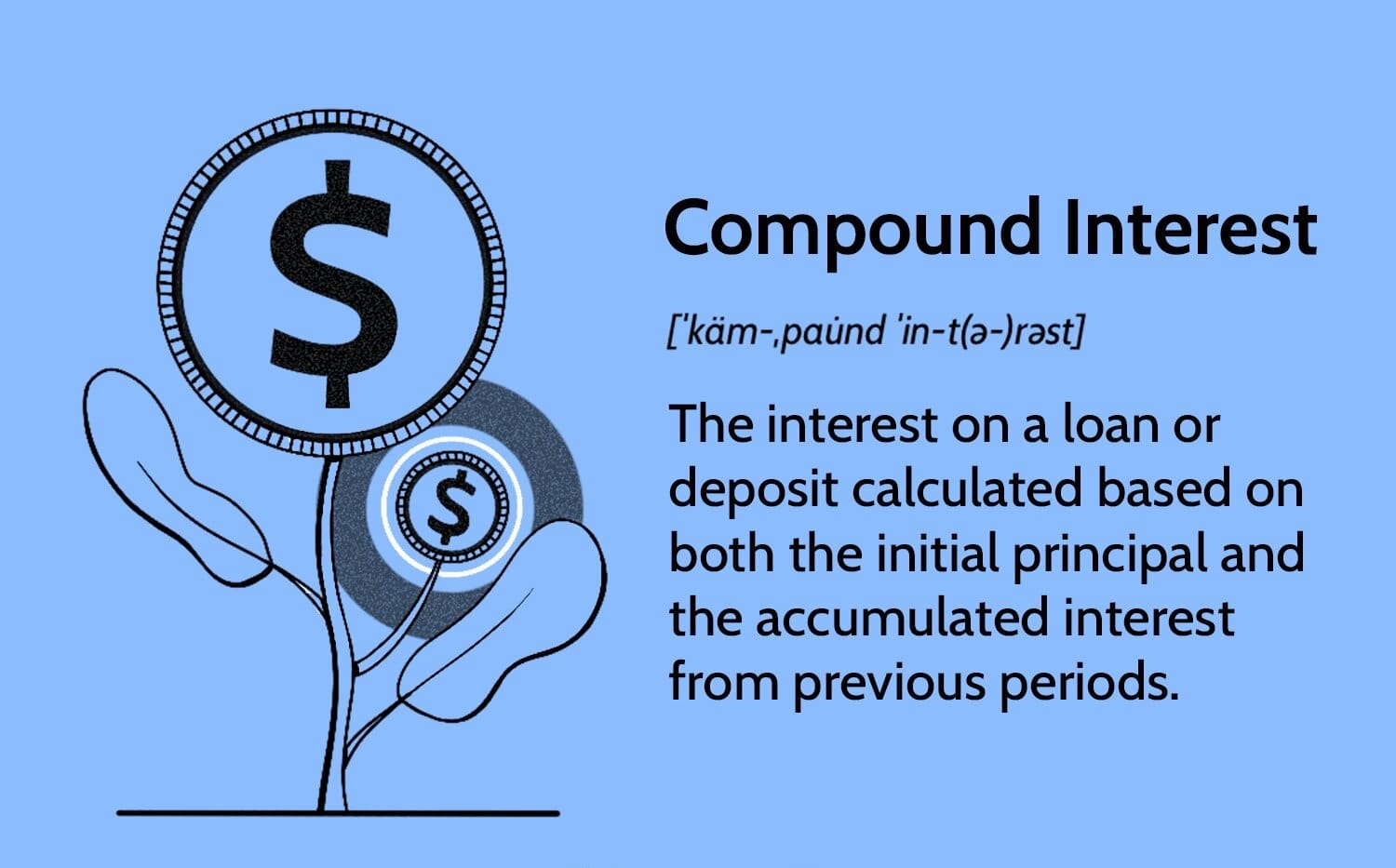Introduction
Welcome to the world of investment! Whether you are a seasoned investor or just starting to dip your toes into the financial market, this article will guide you on how to grow your investments effectively. Investing can be a powerful tool for building wealth and achieving your financial goals, but it is important to approach it with a well-thought-out strategy and a clear understanding of the potential risks and rewards.
Investing involves allocating your money into various assets with the expectation of earning a return on your investment over time. It allows you to grow your wealth faster than traditional savings accounts, but it also carries some level of risk. That’s why it is crucial to have a solid plan and make informed decisions based on your specific financial goals and risk tolerance.
In this article, we will outline the key steps to help you navigate the world of investments with confidence. From assessing your financial goals to evaluating and adjusting your investment strategy, each step plays a vital role in maximizing your returns while minimizing potential drawbacks.
So, whether you’re looking to save for retirement, generate passive income, or achieve other financial milestones, let’s delve into the essential aspects of growing your investments and ensure you’re on the right path to financial success.
Assess Your Financial Goals
Before diving into the investment world, it’s crucial to assess your financial goals. What do you want to achieve with your investments? Are you saving for a specific milestone, such as buying a home, funding your children’s education, or preparing for retirement? Understanding your financial objectives will help you determine the right investment strategy and time horizon.
Take some time to define your short-term and long-term goals. Short-term goals usually have a timeframe of less than five years, while long-term goals extend beyond that. It’s essential to be realistic and specific when setting these goals. For example, instead of saying “I want to save money,” set a concrete target like “I want to save $10,000 for a down payment on a house in five years.”
In addition to specific goals, consider your risk tolerance. How comfortable are you with taking risks in your investment portfolio? This is a critical factor to determine the mix of conservative and aggressive investments that align with your risk appetite. Some individuals are more risk-averse and prefer stable investments with lower potential returns, while others are comfortable with higher risk for the possibility of greater rewards.
Moreover, it’s important to evaluate your current financial situation. Take into account your income, expenses, debt obligations, and emergency fund. Assessing your financial health will help you determine how much you can comfortably allocate towards investments without compromising your overall financial stability.
By taking the time to assess your financial goals, risk tolerance, and current financial situation, you’ll have a solid foundation for creating an investment plan that aligns with your unique circumstances. Remember, your goals may evolve over time, so it’s essential to review and adjust them periodically to ensure they remain realistic and relevant.
Determine Your Risk Tolerance
When it comes to investing, understanding and determining your risk tolerance is a key step in building a successful investment portfolio. Risk tolerance refers to your ability to withstand potential fluctuations in the value of your investments and your willingness to take on higher levels of risk for potentially higher returns.
It’s important to note that risk and return go hand in hand. Generally, investments with higher potential returns also come with a higher degree of risk. On the other hand, investments with lower risk tend to yield more modest returns. Your risk tolerance should align with your financial goals and personal comfort level.
Assessing your risk tolerance involves considering several factors. Firstly, consider the time horizon for your investments. Generally, if you have a longer investment timeframe, you may be more tolerant of short-term market fluctuations and can consider higher-risk investments. If, however, you have a shorter time horizon, you may want to focus on lower-risk investments that provide more stability.
Another factor to consider is your emotional tolerance for risk. Are you able to handle market volatility and potential losses without feeling anxious or panicked? Some individuals are more comfortable with shorter-term fluctuations and have a higher risk tolerance, while others prefer a more conservative approach to avoid sleepless nights worrying about market downturns.
Additionally, it’s crucial to consider your financial situation and overall financial stability. If you have plenty of discretionary income and a solid emergency fund, you may have a higher risk tolerance, as you have more resources to weather potential losses. On the other hand, if you have limited financial resources or high debt levels, it might be wise to take a more conservative approach to protect your financial well-being.
It’s important to note that risk tolerance is a personal decision and there is no one-size-fits-all approach. There are various risk profiling tools and questionnaires available that can help you determine your risk appetite, but ultimately, it’s crucial to trust your instincts and be honest with yourself about your comfort level with risk.
Understanding your risk tolerance will assist you in making informed decisions and crafting an investment portfolio that aligns with your financial goals and personal preferences. Remember, it’s important to regularly reassess your risk tolerance as your circumstances change and to ensure that your investment strategy remains in line with your comfort level.
Understand Different Investment Options
When it comes to investing, there is a wide array of investment options available, each with its own characteristics, risk levels, and potential returns. Understanding these different investment options is essential for building a well-rounded and diversified portfolio that aligns with your financial goals and risk tolerance.
1. Stocks: Stocks represent ownership in publicly traded companies. When you invest in stocks, you become a shareholder and have the potential to benefit from the company’s success through capital appreciation and dividends. However, stocks also come with higher volatility and risk compared to other investment options.
2. Bonds: Bonds are debt instruments issued by governments, municipalities, and corporations. When you invest in bonds, you are effectively lending money to the issuer in exchange for periodic interest payments and the return of your principal at maturity. Bonds are generally considered lower risk compared to stocks but offer lower potential returns.
3. Mutual Funds: Mutual funds pool money from multiple investors to invest in a diversified portfolio of stocks, bonds, or other securities. This allows individual investors to gain exposure to a broader range of assets and benefit from professional management. Mutual funds can vary in terms of risk and objectives, so it’s important to research and choose funds that align with your investment goals.
4. Exchange-Traded Funds (ETFs): ETFs are similar to mutual funds but trade on stock exchanges like individual stocks. They can provide exposure to specific sectors, indices, or asset classes. ETFs offer diversification and liquidity, making them a popular choice among investors.
5. Real Estate: Real estate investing involves buying properties for rental income or potential appreciation. Real estate can provide consistent cash flow and serve as a hedge against inflation. However, it requires careful research, due diligence, and management.
6. Alternative Investments: Alternative investments include assets such as commodities, precious metals, hedge funds, and private equity. These investments are typically less liquid and have higher barriers to entry. Alternative investments can provide diversification and potential returns that may not be correlated with traditional assets.
It’s crucial to research and understand the characteristics and risks associated with each investment option. Consider factors like historical performance, fees, liquidity, and potential tax implications. Diversification is also key – spreading your investments across different asset classes can help mitigate risk and improve overall portfolio performance.
By familiarizing yourself with the various investment options available, you can make informed decisions and create a well-balanced portfolio that suits your financial goals and risk tolerance. Remember to regularly review and adjust your portfolio as needed, and consider seeking the advice of a financial professional to ensure your investments align with your long-term objectives.
Create a Diversified Portfolio
Creating a diversified portfolio is an essential strategy for managing risk and maximizing returns. Diversification involves spreading your investments across different asset classes, industries, geographical regions, and investment options. By doing so, you reduce the impact of any single investment on your overall portfolio and increase the likelihood of capturing positive returns.
Here are some key steps to help you create a diversified portfolio:
1. Asset Allocation: Determine the percentage of your portfolio allocated to different asset classes such as stocks, bonds, and cash. The right asset allocation will depend on factors like your financial goals, risk tolerance, and time horizon. A balanced mix of assets can help you maintain stability while seeking returns.
2. Stock Allocation: Within your equity allocation, consider diversifying your stock holdings across different industries and market segments. This can help protect your portfolio from sector-specific risks and market volatility. For example, you might allocate a portion of your funds to technology stocks, another portion to healthcare, and so on.
3. Bond Allocation: Similar to stocks, diversify your bond holdings across different issuers, credit ratings, and maturities. Consider spreading your bond investments between government bonds, corporate bonds, and municipal bonds. This helps manage credit risk and interest rate risk.
4. Geographical Diversification: Invest in companies and markets from various regions around the world. This helps reduce exposure to any single country’s economic or political risks. Allocating a portion of your portfolio to international markets can provide new opportunities for growth and diversification.
5. Investment Options: Consider including different investment options like mutual funds, ETFs, and individual stocks or bonds within your portfolio. Each option brings its own set of benefits and risks, and having a mix of investments can help balance out your overall portfolio performance.
6. Rebalancing: Regularly review and rebalance your portfolio to maintain your desired asset allocation. As certain investments grow or decline in value, your portfolio’s allocation may shift. Rebalancing ensures that your portfolio stays in line with your objectives and risk tolerance.
Remember, diversification does not guarantee profits or protect against losses, but it helps manage risk. It allows you to benefit from different market conditions and reduces the impact of potential losses. Make sure to conduct thorough research, evaluate your investment options, and consult with a financial advisor to ensure your portfolio is diversified effectively.
Research and Analyze Investment Opportunities
Researching and analyzing investment opportunities is a crucial step in making informed decisions and maximizing your investment returns. A prudent investor understands the importance of conducting thorough due diligence and evaluating potential investment options before committing their hard-earned money. Here are key strategies to help you research and analyze investment opportunities:
1. Set Investment Criteria: Define your investment criteria based on your financial goals, risk tolerance, and time horizon. Determine factors such as desired return on investment, acceptable risk levels, and investment timeframe. Clear criteria will help you focus your research and filter out options that do not align with your objectives.
2. Conduct Fundamental Analysis: Assess the fundamentals of the investment opportunity. For stocks, analyze financial statements, earnings growth, industry trends, and competitive positioning. For bonds, evaluate credit ratings, interest rate environment, and issuer credibility. Understanding the underlying fundamentals can provide insights into the potential risks and rewards associated with the investment.
3. Evaluate Risk-Reward Ratio: Assess the risk-reward ratio of the investment opportunity. Consider the potential returns compared to the level of risk involved. Higher-risk investments may offer the possibility of greater returns, but also carry a higher chance of loss. Understand the risk level and determine whether it aligns with your risk tolerance and investment goals.
4. Consider Market Conditions: Analyze current market conditions and how they may impact the investment opportunity. Factors such as economic indicators, geopolitical events, and market trends can influence the performance of investments. Stay informed about the market and industry factors that may affect the potential success of your investments.
5. Learn from Experts: Stay updated with insights and opinions from investment professionals and experts. Read research reports, watch financial news, and follow reputable investment blogs. These sources can provide valuable insights and different perspectives to inform your investment decisions.
6. Diversify Your Research: Do not rely solely on a single source of information. Diversify your research from multiple reliable sources. When assessing an investment opportunity, consider various viewpoints, analyze data trends, and evaluate the credibility and track record of the information source.
7. Seek Professional Advice: If you are unsure about your investment knowledge or lack the time to conduct thorough research, consider seeking advice from a qualified financial advisor. A financial advisor can offer personalized guidance based on your specific financial goals and risk tolerance.
Remember, investing involves risk, and no investment is guaranteed to be profitable. Conducting comprehensive research and analysis will enhance your understanding of the investment opportunity and improve your decision-making process. By staying informed and making well-informed investment choices, you can increase the likelihood of achieving your financial goals.
Consider Seeking Professional Advice
Investing can be complex and challenging, especially for those who are new to the world of finance. While it’s certainly possible to navigate the investment landscape on your own, there are many benefits to considering professional advice to help you make informed decisions and maximize your investment potential.
Here are some reasons why you should consider seeking professional advice:
1. Expertise and Knowledge: Financial advisors and investment professionals have specialized knowledge and expertise in the field of investing. They stay updated with market trends, research reports, and industry insights that may not be readily available to the average investor. Their expertise can help you make well-informed decisions based on data-driven analysis.
2. Personalized Guidance: A financial advisor can provide personalized guidance tailored to your specific financial goals, risk tolerance, and time horizon. They will take the time to understand your unique circumstances and help you develop an investment plan that aligns with your objectives.
3. Risk Management: Professionals can help you assess and manage investment risk. They have the experience to identify potential risks associated with different investment options and guide you in making risk-conscious decisions. They can also assist in diversifying your portfolio to minimize the impact of potential losses.
4. Emotional Discipline: Emotions can affect investment decisions, leading to impulsive actions or irrational behavior during market fluctuations. A financial advisor can provide an objective perspective and help you stay focused on your long-term investment objectives, preventing emotional biases from derailing your investment strategy.
5. Time Constraints: Researching and managing investments can be time-consuming, especially if you have other personal or professional commitments. By working with a financial advisor, you can offload the burden of continuous research and monitoring to a professional who will dedicate their time and resources to help manage your investments effectively.
6. Access to Resources: Financial advisors often have access to a wide range of resources and tools that can enhance your investment strategy. They can provide insights into investment products, financial planning software, and research platforms that can assist in optimizing your investment portfolio.
7. Long-Term Guidance: Investing is not a one-time event but an ongoing process. A financial advisor can provide consistent guidance and periodic reviews to ensure that your investment strategy evolves with your changing financial circumstances and maintains alignment with your goals.
It’s essential to choose a reputable and qualified financial advisor who operates in your best interest. Look for professionals who have relevant certifications, a solid track record, and a fiduciary duty to act in your best interest.
While professional advice comes at a cost, the potential benefits can outweigh the fees. Ultimately, the decision of whether to seek professional advice depends on your comfort level, investment knowledge, and personal preferences. Consulting with a financial advisor can provide you with the confidence and peace of mind to navigate the complex world of investments successfully.
Monitor and Rebalance Your Portfolio
Once you have built a diversified investment portfolio, it’s important to continually monitor and rebalance your holdings. Monitoring your investments allows you to stay informed about their performance and make necessary adjustments to ensure your portfolio remains aligned with your investment goals and risk tolerance.
Here are key steps to effectively monitor and rebalance your portfolio:
1. Regular Review: Schedule regular reviews of your portfolio to assess its performance and compare it to your investment objectives. This can be done on a quarterly, semi-annual, or annual basis, depending on your preference. Regular reviews will help you identify any underperforming investments or sectors that may require attention.
2. Review Investment Strategy: Evaluate whether your investment strategy remains consistent with your financial goals and risk tolerance. If your circumstances or objectives have changed, you may need to make adjustments to your overall investment plan. Ensure that your portfolio continues to align with your desired asset allocation and risk appetite.
3. Monitor Asset Allocation: Monitor the allocation of your assets to ensure that they remain in line with your desired percentages. As certain investments outperform or underperform, your asset allocation may deviate from the initial plan. Rebalancing involves selling over-performing assets and using the proceeds to purchase underperforming assets to realign your portfolio.
4. Analyze Individual Investments: Evaluate the performance of individual investments within your portfolio. Look for any significant changes in fundamentals, industry trends, or market conditions that may affect their future prospects. Consider selling investments that no longer align with your investment thesis or have consistently underperformed relative to their peers.
5. Stay Informed: Stay updated with market news, economic indicators, and changes in regulations that may impact your investments. Be aware of any major events or trends that could affect specific sectors or asset classes within your portfolio. This information will enable you to make informed decisions about your investments.
6. Seek Professional Advice: Consider consulting with a financial advisor or investment professional who can provide guidance on monitoring and rebalancing your portfolio. They can offer expert insights, analyze your portfolio, and provide recommendations based on their knowledge and experience.
Remember, rebalancing your portfolio is not about timing the market but about maintaining your desired asset allocation. Regularly monitoring and adjusting your investments will help you mitigate excessive risks and ensure that your portfolio remains in line with your long-term investment objectives.
It’s important to note that rebalancing incurs transaction costs and tax consequences. Be mindful of these factors and consult with a financial advisor or tax professional to understand the implications before making any changes to your portfolio.
By maintaining a disciplined approach to monitoring and rebalancing your portfolio, you can enhance your chances of achieving your investment goals and adapting to changing market conditions.
Take Advantage of Tax Efficient Strategies
When it comes to investing, taxes can have a significant impact on your overall returns. To optimize your investment strategy and minimize your tax burden, it’s important to take advantage of tax-efficient strategies. By leveraging tax-efficient investment techniques, you can maximize your after-tax returns and potentially keep more of your hard-earned money. Here are some strategies to consider:
1. Tax-Advantaged Accounts: Take full advantage of tax-advantaged accounts such as Individual Retirement Accounts (IRAs), 401(k) plans, or other employer-sponsored retirement plans. Contributions to these accounts may offer immediate tax benefits, and earnings grow tax-deferred or tax-free, depending on the account type. Utilizing tax-advantaged accounts can help reduce your current tax liabilities and allow your investments to grow more efficiently over time.
2. Asset Location: Strategically allocate your investments across different types of accounts based on their tax treatment. Consider placing tax-efficient investments, such as index funds or tax-managed funds, in taxable brokerage accounts. Place tax-inefficient investments, such as actively managed funds or high-yield bonds, in tax-advantaged retirement accounts. This approach can help minimize the tax impact of your investments.
3. Tax-Loss Harvesting: Implement tax-loss harvesting strategies to offset capital gains with capital losses. By selling investments that have experienced a loss, you can use those losses to offset taxable gains realized from other investments. This technique can help reduce your overall tax liability and potentially generate tax savings.
4. Capital Gains Management: Consider managing your capital gains by strategically timing the sale of investments. By holding investments for longer than a year, you may qualify for long-term capital gains tax rates, which are typically more favorable than short-term rates. This approach can help optimize your tax situation and minimize the amount of taxes owed on investment gains.
5. Dividend Reinvestment Plans (DRIPs): Utilize dividend reinvestment plans offered by companies to reinvest dividends automatically back into the company’s stock or ETF. By reinvesting your dividends instead of taking them as cash, you can defer taxes on these dividends until you ultimately sell the investment.
6. Estate Planning: Develop an estate plan that considers the tax implications of passing on your investments to beneficiaries. Utilize strategies such as gifting securities or establishing trusts to minimize estate taxes and ensure a smooth transfer of assets to your heirs.
7. Consult with a Tax Professional: Consider consulting with a tax professional or financial advisor who specializes in tax-efficient investing. They can provide specific guidance based on your individual circumstances, ensuring that you take advantage of all available tax-saving strategies while staying compliant with tax laws.
It’s important to note that tax laws and regulations may change over time and vary between jurisdictions. Stay informed about current tax rules and consult with a tax professional to ensure you effectively implement tax-efficient strategies within the guidelines of the law.
By incorporating tax-efficient strategies into your investment plan, you can potentially minimize the impact of taxes on your investment returns and maximize the growth of your portfolio over the long term.
Evaluate and Adjust Investment Strategy Regularly
Investing is an ongoing process that requires regular evaluation and adjustment to ensure your investment strategy remains effective and aligned with your financial goals. Market conditions, economic factors, and personal circumstances can change over time, necessitating a proactive approach to managing your investments. Here’s why it’s important to evaluate and adjust your investment strategy regularly:
1. Changing Market Dynamics: Financial markets are constantly evolving, influenced by economic conditions, geopolitical events, and industry disruptions. Regularly evaluating your investments allows you to stay informed about these changing dynamics and make necessary adjustments to capture opportunities or mitigate risks.
2. Reviewing Performance: Assess the performance of your investments against their benchmarks and your initial expectations. Identify any consistently underperforming assets or sectors that may require adjustments or potential reallocation of resources. Likewise, acknowledge investments that outperform and consider whether it’s sustainable or if it’s time to take profits.
3. Reassessing Risk Tolerance: Evaluating your risk tolerance periodically is crucial. Your risk tolerance may change due to evolving personal circumstances, such as changes in income, family obligations, or time horizon. Reassessing your risk tolerance enables you to ensure your investment strategy aligns with your comfort level and avoids excessive exposure to risk.
4. Aligning with Financial Goals: Review your financial goals regularly and assess whether your investments are on track to achieve them. Circumstances may change, necessitating adjustments to your investment strategy to stay aligned with your desired outcomes. For example, if your goals change to focus on short-term needs, you may need to adjust your asset allocation accordingly.
5. Adjusting Portfolio Allocation: Over time, your portfolio allocation may drift due to market fluctuations or changes in individual investments. Regular evaluation enables you to rebalance your portfolio and bring it back to the desired asset allocation. This ensures that your investments continue to reflect your risk profile and maintain diversification.
6. Utilizing New Opportunities: Regular evaluations may reveal new investment opportunities that align with your investment objectives. Emerging sectors, innovative technologies, or market trends may provide avenues for growth. By staying vigilant, you can seize these opportunities and position your portfolio for potential long-term gains.
7. Seeking Professional Guidance: Consult with a financial advisor or investment professional for a comprehensive review of your investment strategy. They can provide expert insights, conduct portfolio assessments, and offer recommendations based on their experience and knowledge. Professional guidance adds an objective and knowledgeable perspective to your investment decisions.
Remember, any adjustments to your investment strategy should be made based on careful consideration, research, and evaluation. It’s important to strike a balance between staying proactive and avoiding the temptation to make impulsive or emotional decisions based on short-term market fluctuations.
By regularly evaluating and adjusting your investment strategy, you can adapt to changing market conditions, stay on track towards achieving your financial goals, and position yourself for long-term success in the dynamic world of investing.
Conclusion
Investing is a powerful tool for growing your wealth and achieving your financial goals. With a well-thought-out investment strategy and a commitment to ongoing evaluation and adjustment, you can navigate the complex world of investments with confidence and maximize your potential returns.
In this article, we have explored crucial steps to help you grow your investments effectively. We began by emphasizing the importance of assessing your financial goals and determining your risk tolerance. Understanding your objectives and comfort level with risk provides a solid foundation for building an investment plan that aligns with your unique circumstances.
We then explored the significance of understanding different investment options and creating a diversified portfolio. By spreading your investments across various asset classes and industries, you can mitigate risk and capture opportunities for growth.
Researching and analyzing investment opportunities, as discussed, enables you to make informed decisions and identify investments that align with your criteria and objectives. Seeking professional advice can provide additional expertise and personalized guidance to optimize your investment strategy.
Furthermore, we highlighted the importance of monitoring and rebalancing your portfolio. Regular reviews, analysis, and adjustments ensure that your investments remain aligned with your goals and risk tolerance, maximizing your chances of success.
Additionally, we touched upon the significance of tax-efficient strategies and the potential benefits they offer. Utilizing tax-advantaged accounts, engaging in tax-loss harvesting, and seeking professional advice can help minimize your tax burden and enhance your after-tax returns.
Lastly, we emphasized the importance of evaluating and adjusting your investment strategy regularly. Market dynamics, changing goals, and personal circumstances require a proactive approach to ensure your investments remain on track.
While investing involves risk and no strategy is foolproof, following these steps will empower you to make informed decisions and increase your chances of achieving your financial objectives.
Remember, investment decisions should be based on your unique circumstances, goals, and risk tolerance. Consider seeking professional advice to ensure that your investment strategy aligns with your objectives and evolves as your circumstances change.
By approaching investing with knowledge, diligence, and adaptability, you can navigate the investment landscape with confidence and work towards a prosperous financial future.

























